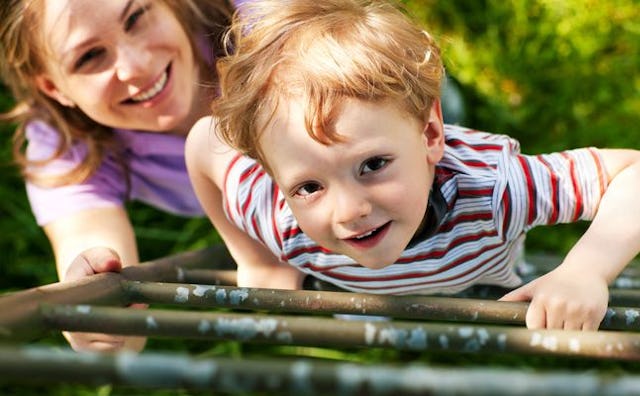My Child Has Asperger's: Should I Have More Children?

“Do you think we should have more children?” I asked my husband, Jed, over dinner when our only child was 3. Noah had finished his pasta in record time and was sitting in his toddler-size rocking chair in the family room reading Richard Scarry’s Cars, Trucks and Things That Go.
“Of course,” he answered. “Why wouldn’t we have more?”
Noah had recently received an Asperger’s diagnosis. We’d always wanted at least three kids, but now I was wondering if that was a smart idea. Given all that Noah might need, was it fair to add more kids to the mix? And what if we had more children with special needs — would we have the time, money, and energy to manage?
We had the same responsibilities as parents of typical kids, but many of our interactions took longer and required step-by-step instruction. My husband took Noah to the park, and while other kids seemed to just run up the steps and throw themselves down the slide, Jed patiently talked Noah through climbing and sliding day after day until our boy felt comfortable.
Noah and I would spend hours sitting on our curb waiting for a dump truck to drive by. I knew we couldn’t go back inside our New Jersey split-level until we’d seen at least one. Our routine was completely predictable. Sit, wait, and respond every minute to the question, “When will the truck come?”
When Noah was young, I managed most things related to his diagnosis. I went to team meetings where therapists and teachers offered inconsistent opinions on his prognosis. One teacher told me he’d never be able to manage in a regular classroom. Another therapist said he would “catch up to his peers” — if we scheduled therapy sessions three times a week.
Some of the hardest moments for me were when we tried to connect with other families. Noah didn’t interact with kids at the playgroup I joined. He sat by himself, moving a fire truck back and forth while the kids donned firefighter costumes and ran around him, pretending to put out a fire.
“Why doesn’t he play with the other kids?” one of the moms asked.
“It’s a little chaotic for him,” I responded. “He likes to play more quietly.”
“I wish I had a kid like that,” she said as her daughter ran by, imitating a siren. “My ears could use a rest.”
I didn’t want Noah to be a different child. But I had to acknowledge that helping him interact took extra helpings of time and energy. I probably would’ve been labeled a “helicopter parent” if the term had existed when he was little. At birthday parties, other kids followed one another into the party room for cake, and Noah would wander around wondering what to do until I took his hand and led him to a seat. “Remember that all the kids will sing ‘Happy Birthday’ soon,” I’d remind him, so he could step back from the group and cover his ears. If we tried to sing “Happy Birthday” at Noah’s parties, he’d scream and cry until we stopped.
Noah was comfortable in our family of three. I worried that if we added another child, I wouldn’t be able to give him the time, attention, love, and care he needed to make sense of the world around him. I knew I loved being a mom; I loved being his mom, and I was afraid I’d be failing Noah if I changed our family.
So how did we decide that having more children was right for us? Jed’s optimism overcame my uncertainty. I was able to say yes to more children because he was confident we would continue to be the parents Noah needed. It’s obvious to me, 16 years later, that we didn’t fail Noah. He has two younger brothers who love him unconditionally. Noah has gotten to be a leader in the family; taking his brothers out for pizza, helping with homework, or offering a hug after a bad day.
The 3-year-old who reversed his pronouns and avoided other children now lives away at college and texts his friends. He’s doing these things well, in part, because his brothers helped him practice. Thinking of their bonds brings to mind a Hindu proverb: “Help your brother’s boat across, and your own will reach the shore.”
This article was originally published on